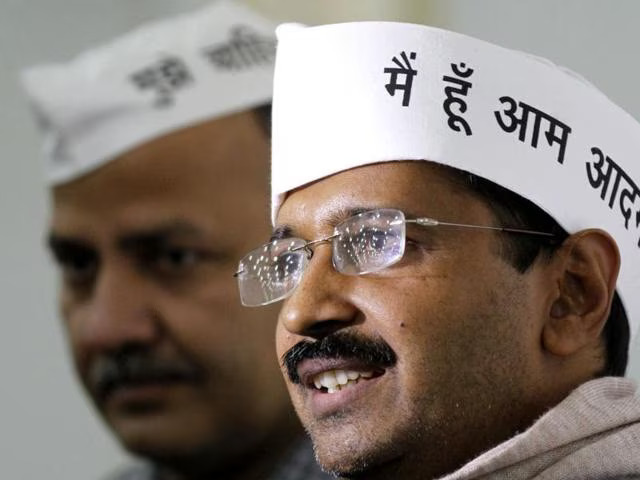You will be excused if looking at the title you feel you are reading one of the myriad LinkedIn Posts that are written as management lessons after any event these days. First things first. This is not such a post. This is a political post but with a reference to the marketing concept called “Positioning”.
With that out of the way, let me take you back to the 70s and 80s. If you are a ’70s kid as I am, you would remember a toilet soap called Lifebuoy. In the ’70s and probably ’80s, the Lifebuoy soap was targeted towards hardworking, working males in rural and semi-urban markets. It was a basic red colour rectangular soap – one that resembled a bar (washing) soap at times. It had a strong odour that aroused freshness and was positioned as the ‘Tandurusti Ki Raksha’ soap for the aam janta and if my memory serves me right, the price was just about 1 rupee or thereabouts. I remember the soap getting a very good response on launch and the product had a reasonably high market share in that period.
In the 90s and later, with the affordability of Indians started going up, the brand probably felt the need to re-position itself as a premium soap. It was no longer the affordable, long-lasting soap meant for the masses but aspired to become the hygiene soap targeted towards the entire family. In this transition, it started squandering away its market share and presence. As it happens with many brands, it fell into the “brand extension trap” and extended its brand to other categories like hand wash. Today, Lifebuoy as a brand is known for its hand wash rather than the original category namely the affordable toilet soap that promised hygiene.
You get where I am going. The journey of Arvind Kejriwal from a crusader initially in the 2010s to the three-time Chief Minister of Delhi leading the Aam Admi Party (AAP) is well documented and known to all. So, I am not going to repeat it here. While there are many reasons why Arvind Kejriwal and the AAP lost yesterday at the Delhi state elections, in my opinion, the principal one is the drifting away from the core positioning of Kejriwal and his party.
Kejriwal and his party were seen to infuse a whiff of fresh air in the polluted political atmosphere of Delhi. Kejriwal promised change, good governance, a lot of freebies and above all some honesty and probity in public life. The middle class veered towards Kejriwal. Soon, the poor working class followed. In 2015, Kejriwal’s jaadoo worked and AAP’s jhadoo got a sweeping majority. In the 1st full term of Kejriwal which was prior to the last term, AAP did bring about changes for the good. The transformation of government schools was there to see. The Mohalla clinics were a reality. Promises like reduction in electricity bill, free bus rides etc. did make large sections of people satisfied and happy. In Delhi, though Modi’s BJP could win 7 out of 7 Lok Sabha seats in 2014 and 2019, in the Delhi state polls that followed, AAP could sweep Delhi leaving just a handful of seats to the BJP.

In parallel, Kejriwal was chiselling his and the party’s positioning carefully. Kejriwal and other leaders showing up with topis with the caption ‘Main hoon aam admi’ written on them, to start with. Kejriwal’s attire of an untucked short-sleeved shirt with not-so-tailored fit trousers and slippers was by design. So was the image of the simple Raynold ballpoint pen popping out from his shirt pocket. The use of a small Aam Admi car as the official vehicle and continuing to stay in a government-allotted flat were carefully chosen symbols. The “Muffler Man” memes around Kejriwal that were made to trend by the social media team of the AAP were not for fun but to build on his Aam admi positioning. All this combined with the delivery of governance in the 1st full term, helped to win the elections and disseminate the opposition.
It was obvious that the Delhi voters were clearly transactional when they were overwhelmingly supporting Modi and the BJP for the Lok Sabha polls and within months shifting to Kejriwal and the AAP for the state polls. This meant that out of the 53-54% share AAP was getting in the state polls, a significant 20% were actually floating and could swing away if they were not happy with the AAP and Kejriwal. In the last term, Kejriwal drifted away from his and the party’s positioning which was built brick by brick assiduously since 2012.
In the last 5 years, first, Kejriwal and his team got mired in the Delhi liquor scam. With that, the image of “Khattar Imandari” or that of a spotless politician got hit. Second, his image of a simple, Aam Admi neta got destroyed when pictures and videos of his “Sheesh Mahal” came out in the media. Kejriwal became a living example for explaining the idiom “Those who live in glass houses should not throw stones at others”. Third, with the continuing run-ins with the LG of Delhi and the leadership being in jail, day-to-day governance took a beating. The good things like the Mohalla Clinics, the schools and freebies were already rewarded by the public in 2020 and therefore became a thing of the past. Beyond these first-term successes, the AAP didn’t have much to show. The party was hoping that the narrative of “Kejriwal Vs who” would take them to at least a simple majority.
As I mentioned earlier, what was forgotten was the transactional component of the Delhi electorate. In the eyes of the electorate, the AAP had significantly drifted away from its original positioning of a clean sarkar where its leaders would lead a simple Aam Admi life, and provide a clean government while taking care of the pocket of the voters by efficient distribution of social welfare measures.
If BJP which is also known to distribute freebies efficiently promised much higher freebies and will be able to provide better governance because of the Double-engine sarkar, in the voter’s eyes, this is a better bet. When AAP became another “normal” political party, the swing voter block of close to 20% decided to vote for the better normal party in their opinion namely the BJP. That the BJP didn’t have a face against Kejriwal didn’t even deter the swing voters to ditch the AAP and shift to the BJP. That’s what turned the tables against Kejriwal and the AAP thereby becoming a case study to explain the ill effects of drifting away from one’s core positioning in the minds of the voters. Lifebuoy survived by establishing itself in the hand wash category and sort of compensating for its loss in the toilet soap category and herein there are some pointers for what Kejriwal and the AAP could do as well, going forward.
Post Script: While the BJP takes all elections seriously and goes to win at all costs, I had thought that the best outcome for the BJP in Delhi would be a “scrape-through win” for the AAP. By this, Kejriwal would still continue as the CM and be confined to Delhi and its issues. Now a free Kejriwal could go back to his original positioning as the Aam Admi crusader and take up some issue or other against the Modi Sarkar and become an everyday headache for the Sarkar!
Image courtesy: Hindustan Times
